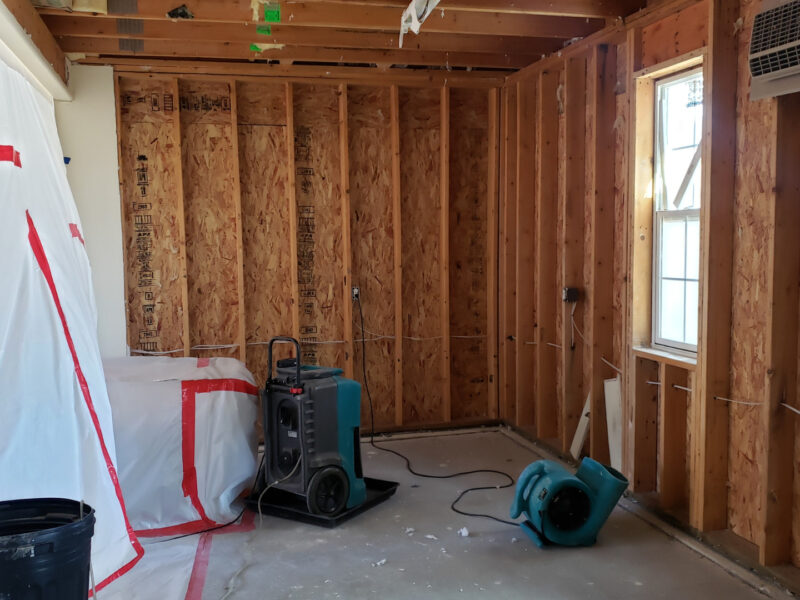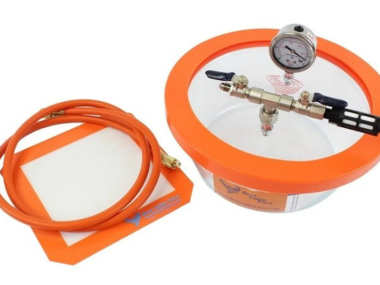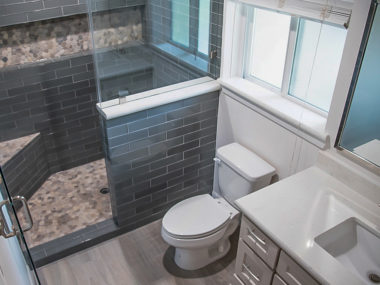Key Takeaways:
- Water damage can occur due to plumbing issues, natural disasters, roof leaks, and appliance failures.
- Signs of water damage include water stains, musty odor, mold growth, and warped materials.
- Preventive measures to avoid water damage include regular maintenance, proper drainage, installing a sump pump, and proper landscaping.
- The water restoration process involves assessing and documenting the extent of damage, removing water, drying affected areas, and restoring the damaged property.
- When choosing a professional water restoration company, consider their certifications, experience, and understanding of the restoration process and timeline.
- During water restoration, safety is ensured through proper handling of contaminated water, use of protective equipment, and adherence to industry standards.
- Efficiency in restoration is achieved through the use of advanced equipment and techniques, and restoration professionals help minimize disruption and costs.
Welcome to the ultimate guide to water restoration in South Sound. When water damage strikes, whether it’s from a burst pipe, a natural disaster, or a leaky roof, it’s crucial to have a comprehensive understanding of the causes, solutions, and process of water restoration. In this guide, we will delve deep into the topic, providing valuable insights and information to help you restore your property safely and efficiently.
Understanding Water Damage: Causes and Solutions
Water damage can occur due to various causes, and it’s essential to identify them to prevent future incidents. Some common causes of water damage include:
The Common Causes of Water Damage
– Plumbing Issues: Leaky pipes, burst pipes, or faulty plumbing fixtures can lead to significant water damage. Regular inspections and timely repairs can help prevent these issues.
– Natural Disasters: Floods, hurricanes, and heavy rainfall can result in extensive water damage to residential and commercial properties. Understanding the risk in your area and taking appropriate precautions is crucial.
– Roof Leaks: A damaged or poorly maintained roof can allow water to seep into the property, causing damage to the ceiling, walls, and other structural elements. Regular roof inspections and repairs are essential.
– Appliance Failures: Malfunctioning appliances, such as washing machines, dishwashers, or water heaters, can cause water damage if not promptly addressed. Regular maintenance and inspections can help prevent these incidents.
When facing water damage, identifying the signs early on is crucial for effective restoration. Some common signs of water damage include:
Identifying the Signs of Water Damage
– Water Stains: Yellow or brown stains on ceilings, walls, or floors are often an indication of water damage. These stains can indicate ongoing moisture issues.
– Musty Odor: A persistent musty smell can be a sign of hidden water damage. It’s important to investigate the source of the odor to prevent further damage.
– Mold Growth: The presence of mold or mildew in damp areas signifies excessive moisture. Mold can cause health issues and should be addressed promptly.
– Warped or Buckling Materials: Swollen or warped walls, floors, or ceilings suggest water damage. These materials should be inspected and repaired to prevent further deterioration.
Preventing water damage is always preferable to dealing with the aftermath. Here are some preventive measures you can take to avoid water damage:
Preventive Measures to Avoid Water Damage
– Regular Maintenance: Perform regular inspections of your plumbing system, roof, and appliances to detect and address any potential issues before they escalate.
– Proper Drainage: Ensure that your property has adequate drainage systems in place to divert water away from the foundation. Clear gutters and downspouts regularly to prevent blockages.
– Install a Sump Pump: A sump pump can help prevent basement flooding by pumping out excess water. Consider installing one if your property is prone to water accumulation.
– Proper Landscaping: Slope the landscape away from your property’s foundation to prevent water from pooling near the building. Consider using a suitable ground cover to limit soil erosion.
The Process of Water Restoration: How It Works
When water damage occurs, it’s crucial to follow a systematic process to restore your property effectively. Here are the key steps involved in water restoration:
Assessing and Documenting the Extent of Water Damage
The first step in the water restoration process is to assess the extent of the water damage. A certified water restoration professional will inspect the affected areas, document the damage, and create a detailed plan for restoration. This step is vital to determine the necessary actions and estimate the restoration timeline and cost.
Removing Water and Drying the Affected Areas
Once the assessment is complete, the next step is to remove standing water and dry the affected areas. Powerful pumps and water extraction equipment are used to remove water efficiently. Specialized drying equipment, such as dehumidifiers and air movers, are then deployed to eliminate moisture from the air and materials, preventing further damage and mold growth.
Restoring and Repairing Damaged Property
After the affected areas are thoroughly dried, the restoration process begins. This may include repairing or replacing damaged walls, floors, ceilings, and other structural elements. The goal is to restore the property to its pre-damage condition. Professional restoration technicians use specialized tools, materials, and techniques to ensure a high-quality restoration.
Choosing a Professional Water Restoration Company
When facing water damage, it’s essential to hire a certified and insured water restoration company South Soun, to ensure a successful restoration process. Here are key factors to consider when selecting a company:
The Importance of Hiring a Certified and Insured Water Restoration Company
A certified water restoration company has the necessary expertise and training to handle water damage effectively. Additionally, choosing an insured company provides liability protection in case of any accidents or further damage during the restoration process. Verify the certifications and insurance coverage of the company before hiring their services.
Evaluating the Experience and Expertise of the Restoration Team
Experience in the field is crucial when it comes to water restoration. Look for a company with a proven track record and positive customer reviews. The restoration team should have extensive knowledge and expertise in handling different types of water damage scenarios. Ask for references and examples of their past work to assess their capabilities.
Understanding the Water Restoration Process and Timeline
Before hiring a water restoration company, ensure they provide a clear understanding of the restoration process and timeline. This includes assessing how quickly they can respond to emergencies, their availability for inspections, and an estimate on the overall duration of the restoration process. Having a transparent understanding of the timeline allows you to plan accordingly and minimize disruptions.
Ensuring Safety and Efficiency during Water Restoration
During the water restoration process, the focus should not only be on effective restoration but also on safety and efficiency. Here’s how professionals ensure these aspects:
Handling Water Damage in a Safe and Environmentally-Friendly Manner
Professional restoration companies follow strict safety protocols to ensure that the restoration process is safe for both the occupants and the environment. This includes the proper handling and disposal of contaminated water, the use of protective equipment during restoration activities, and the adherence to industry standards and regulations.
Utilizing Advanced Equipment and Techniques for Efficient Restoration
In order to restore a property efficiently, professional restoration companies utilize advanced equipment and techniques. This includes using high-powered pumps and extraction tools to remove water quickly, as well as employing specialized drying equipment to eliminate moisture effectively. Utilizing the right equipment ensures faster restoration and prevents further damage.
The Role of Restoration Professionals in Minimizing Disruption and Costs
Experienced restoration professionals understand the importance of minimizing disruption and costs during the restoration process. They work efficiently to restore your property to its pre-damage condition as quickly as possible, minimizing downtime. Additionally, their expertise helps identify hidden damage and potential issues that could lead to future problems, thereby reducing long-term costs and ensuring a thorough restoration.
By following this expert guide to water restoration in South Sound, you will be well-prepared to handle any water damage emergencies that may occur. Remember, prompt and professional restoration is key to preventing further damage and ensuring the safety and integrity of your property.
FAQ
Question: What are the common causes of water damage? Answer: The common causes of water damage include plumbing issues, natural disasters, roof leaks, and appliance failures.
Question: How can I identify the signs of water damage? Answer: You can identify the signs of water damage through water stains, musty odor, mold growth, and warped or buckling materials.
Question: What preventive measures can I take to avoid water damage? Answer: You can take preventive measures such as regular maintenance, proper drainage, installing a sump pump, and proper landscaping.
Question: What is the process of water restoration? Answer: The process of water restoration involves assessing and documenting the extent of damage, removing water, drying affected areas, and restoring the damaged property.
Question: What should I consider when choosing a professional water restoration company? Answer: When choosing a professional water restoration company, consider their certifications, experience, and understanding of the restoration process and timeline.
Question: How do professionals ensure safety during water restoration? Answer: Professionals ensure safety by handling water damage in a safe and environmentally-friendly manner, using protective equipment, and adhering to industry standards.
Question: How do professionals achieve efficiency in restoration? Answer: Professionals achieve efficiency in restoration through the use of advanced equipment and techniques, minimizing disruption and costs.
Question: What is the role of restoration professionals in minimizing disruption and costs? Answer: Restoration professionals work efficiently to restore the property, minimizing downtime and identifying potential issues to reduce long-term costs and ensure a thorough restoration.
Useful Resources:
- EPA – Water Damage Restoration
- IICRC – Standards and Reference Guide for Professional Water Damage Restoration
- FEMA – Documents and Publications
- National Fire Protection Association
- S. Department of Housing and Urban Development
- Occupational Safety and Health Administration (OSHA)
- Natural Resources Defense Council (NRDC)
- Centers for Disease Control and Prevention (CDC)







